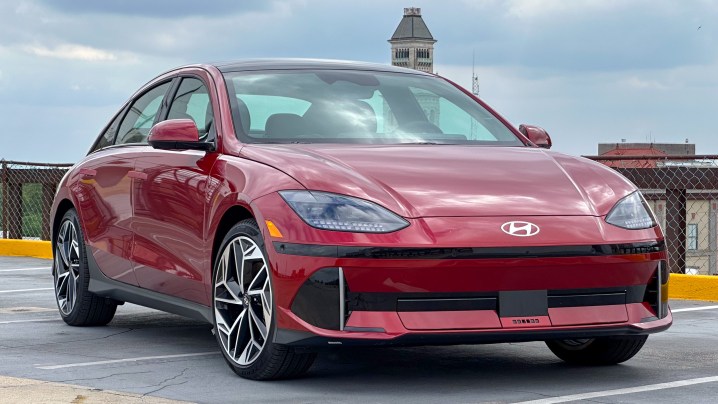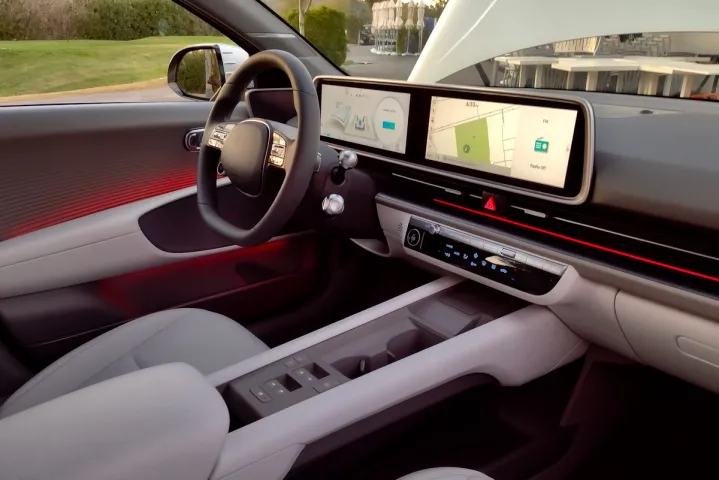
Buying a car is almost always a huge pain. But these days, there are more and more ways to buy a car online, and for many people, that’s a good thing. When buying a Tesla, for example, the price is the price — there are no dealer markups, and you can finance the car straight from the Tesla website itself. But the majority of the time, you still have to go through your local dealer, paying sometimes tens of thousands more than the list price of the car — simply because of the fact that the car is in high demand.
Amazon, seemingly, wants to change how we buy cars — and has announced that it’ll be selling cars straight from Amazon.com starting next year. At first, it’ll only be selling Hyundai cars, but Amazon clearly wants to play a bigger role in the car-buying process, and it’s very likely other companies will jump on board too.
But don’t get your hopes up yet. Amazon sure might start selling cars from its website, but don’t think that the experience will be pain-free right away.
How to buy a car
These days, there are a few ways to buy a car. Many new companies are taking a direct-to-consumer approach. That’s to say, you’ll head to the company’s website or sometimes a local storefront (it’s different from a dealer as the companies directly own these storefronts), and pay a set price for the car. You won’t haggle on pricing, and you won’t wonder if you’re paying more than you should.

But those kinds of car sales make up a small percentage of new cars sold in the U.S. — the majority of them are still sold through dealerships. And dealerships are much more susceptible to the laws of supply and demand — where they might increase the price when supply is limited and demand is high.
The Amazon way
Buying a car on Amazon won’t be the same as buying the cat food. You won’t be able to hit “Buy it Now” and get free shipping through your Prime membership the same way you would buy anything else on the website.
So, how will it work instead? Well … through local dealers.
In Amazon’s announcement, the company noted that it would merely serve as a way “for dealers to build awareness of their selection and offer convenience to customers.” In other words, Amazon will seemingly only be a storefront for local dealers — not a storefront for the companies to sell directly to consumers. That’s pretty unfortunate, but not necessarily all that surprising.

And while haggling with dealerships is always a terrible experience, it can limit exactly how much of a markup you’ll pay. Buying through Amazon will seemingly remove the ability to haggle at all, meaning that it’ll be more likely for you to pay a higher price than you would need to.
It’s not all bad
Of course, there are still advantages to the way Amazon is approaching car-selling. Dealerships will still be able to set prices on their Amazon portal, but beyond that and picking up the car itself, that’s seemingly the only interaction you’ll have with them. Customers will be able to search for the exact models and trims that they want, and find out where the nearest model or models are. Sure, you can usually do the same on manufacturer websites — but automaker websites are rarely great. Amazon’s not perfect, but at least most people are used to navigating the Amazon website.
It’s also possible that you’ll be able to window-shop a little more easily — though the exact mechanics for searching for a car on Amazon have yet to be revealed. If dealerships will indeed continue to set prices on Amazon, hopefully you’ll be able to see prices from a variety of dealerships in your vicinity — ensuring that you’ll pay the smallest dealership markup that you can. That’s a good thing.
The future of car-buying
None of this is to downplay Amazon’s role in the car business. Increasingly, Amazon wants to enter the automotive industry — and beyond the announcement that it’ll sell Hyundai cars on Amazon, the company also said it’ll power Hyundai’s cloud infrastructure with Amazon Web Services, and that Alexa will be available in Hyundai cars in the future.

But hopefully, the future of actually buying a car is direct-to-consumer. Again, local businesses are great — and we should support them. But local dealerships are a notoriously bad experience for consumers, not to mention how much money they regularly gouge from consumers on cars that should cost a whole lot less. Perhaps there’s a middle-ground — with more regulations around how dealerships can sell to consumers. But in the meantime, buying directly from the company is a much better experience.
Amazon could, of course, play a role in this. Companies could theoretically sell their cars directly to consumers through the Amazon storefront. It’s a little hard to imagine carmakers giving that control up to a company like Amazon — but if Amazon can seriously improve the car-buying process, maybe that’ll be enough to convince them.



